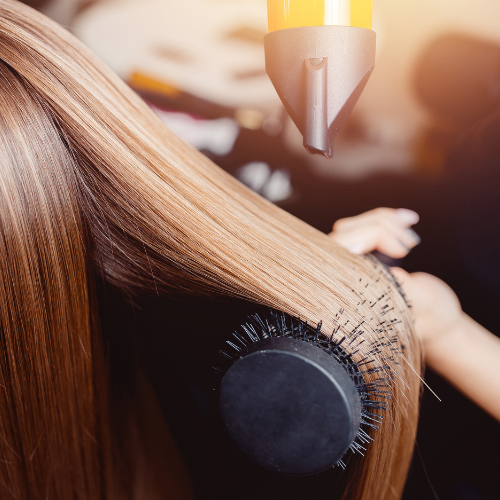Hair Extension Repair Bootcamp
$0.00 1 Sections 3 Lessons
Course Description
How to prevent hair extensions from matting or getting into a tangle
This course is designed to help hair stylists understand how to troubleshoot hair extension matting or tangling issues that their clients may encounter due to common issues: moisture imbalances, product use or styling use. It's not always obvious and we always want you to be well prepared!
During this course, hair stylists will learn the fundamental causes of matting in hair extensions, including the impacts of moisture/cuticle balance barrier, product buildup, and excessive styling. We will also delve into how to identify and diagnose matting in hair extensions, allowing hair stylists to provide targeted solutions to their clients.
Eliminate the nightmare of extensions matting
Natural hair that is matted at the root is caused by improper maintenance or tightening.
If you are experiencing matting of the natural hair, this can often be caused by sleeping with wet hair or by improper system maintenance. Detangling of this kind, will not be covered in the course. Wearing permanent hair extensions (longer than 3 months) can cause the bonds to intertwine. You will no longer be able to run your fingers through your hair. Regular maintenance prevents your hair bonds from creating damage to the hair. Refer to your installation method for details.
How to fix matted hair extensions and prevent hair extensions from matting
The course will cover the following topics:
1. Understanding what Causes Hair Extensions to Become Matted:
This section will provide an in-depth look at the factors that contribute to matting in hair extensions, such as humidity, excessive product use, and heavy styling. By understanding these causes, hair stylists will be better equipped to identify the root of their clients' matting issues.
Reasons why your hair extensions get matted aren't mysterious. Hair extensions are prone to become frizzy, get tangled, create matted roots or matted sections when we don't respect the individual hair strands.
2. Diagnosing Tangled Hair Extensions:
In this section, hair stylists will learn how to identify different types of matting in hair extensions. They will learn to differentiate between tangling and matting, and how to assess the severity of the issue.
Real hair extensions (even non-remy hair) can begin to have issues even if products you use are designed for hair extensions. Moisture and product coating imbalances are typically diagnosed at the sink. Brush your hair to remove all knots. Wash your hair and watch carefully what it does when you get the hair extensions wet. If there is a hard coated shell on the hair from the products that you use, the water will not seem to absorb. Hair extensions are dry inside, but wet outside. When the coating is removed, it will cause the hair extensions to cling to its neighboring strands - almost like a suction.
Your set of hair extensions are an investment. Be sure to care for your extensions like you would a fine piece of clothing. Be sure the the products they come in contact with won't accidentally damage the hair or become the cause of matted hair.
3. Solutions that Prevent Matting:
Once hair stylists have identified the cause and type of matting, they will learn different techniques to help clients maintain their hair extensions, including how to brush out and detangle matting. We will also provide guidance on how to avoid matting issues in the future by recommending products and styling techniques that help to maintain the health of hair extensions.
When hair extensions become matted, this could also signify issues with your aftercare routine. When caring for your hair, it is best to put your hair into a braid before going to bed. Never sleep on wet hair extensions. Going to bed with wet hair can cause natural hair to become matted at the root and could damage your hair. Severely matted natural or extension hair can cause breakage. Be sure to keep your hair extensions dry before bedtime.
A good morning and evening routine will save you time and money in the long run.
4. Maintenance Tips for Hair Extensions:
Finally, we will go over some simple steps that clients can take to maintain their hair extensions between appointments. This will include recommendations for hair care products, styling techniques, and brushing and detangling tips.
By the end of this course, hair stylists will have the knowledge and skills necessary to troubleshoot hair extension matting issues for their clients. They will be able to diagnose the issue and provide targeted solutions to help their clients maintain healthy, beautiful hair extensions.
Course Content
Don't worry, we have you covered!
How Did We Get Here?
Hair Extension Repair Bootcamp
Download the Workbook Here
